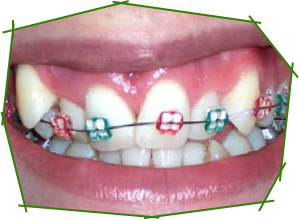
Braces have become the norm today. Some kids actually look forward to having braces because all their friends have some and it is a cool thing to change the colour of the elastics according to the seasons and special events throughout the year. You may think that braces are only about making teeth straight and more appealing. But there is much more to braces than that. Each tooth in the mouth is formed to meet a specific function: incisors to cut, canines to tear and act as cornerstones of the mouth and finally, molars (and premolars) to crush, chew and reduce food into swallowable bites. In order for the mouth to work efficiently without breaking down, it is most important that each tooth in the mouth be coupled with an opposing tooth of the same design or form: incisors with incisors; canines with canines; molars with molars. When a strong tooth like a canine becomes coupled with a weaker tooth such as an incisor or premolar, the weaker tooth becomes exposed to stresses it is not designed to sustain. The consequences for the weaker tooth can be catastrophic over time.
In addition, the canines are designed to support your entire lower jaw when you slide your teeth right or left. This protective mechanism serves to safeguard your dentition by disengaging certain chewing muscles. When the canines are positioned in a way that prevents them from doing their job, the rest of the dentition suffers.
